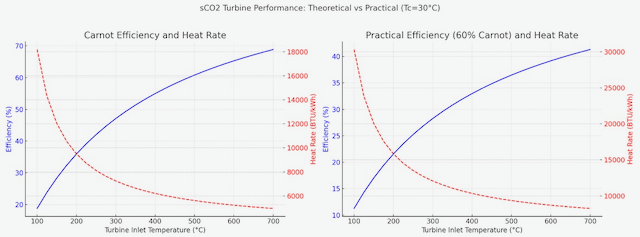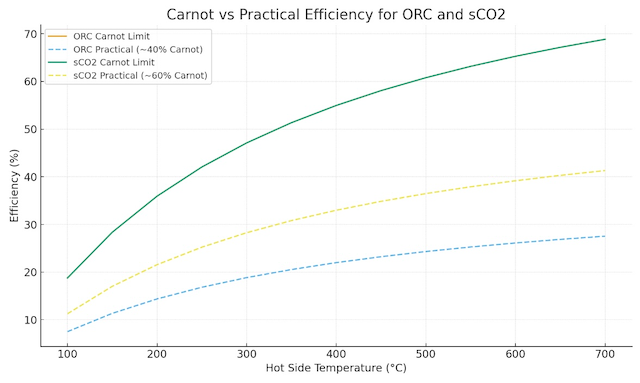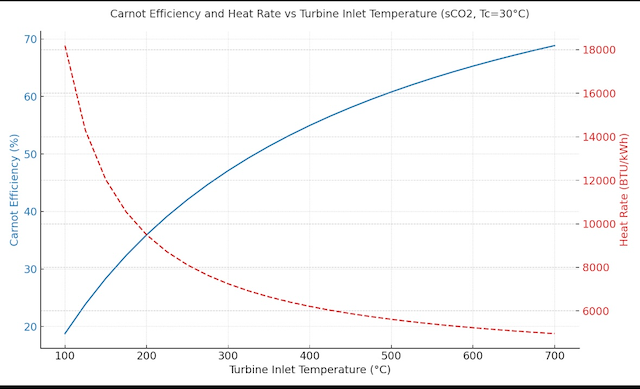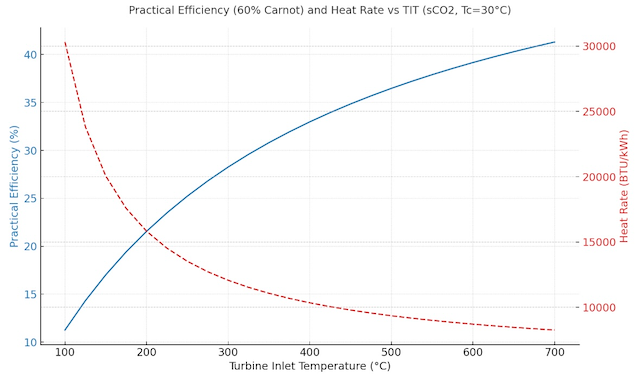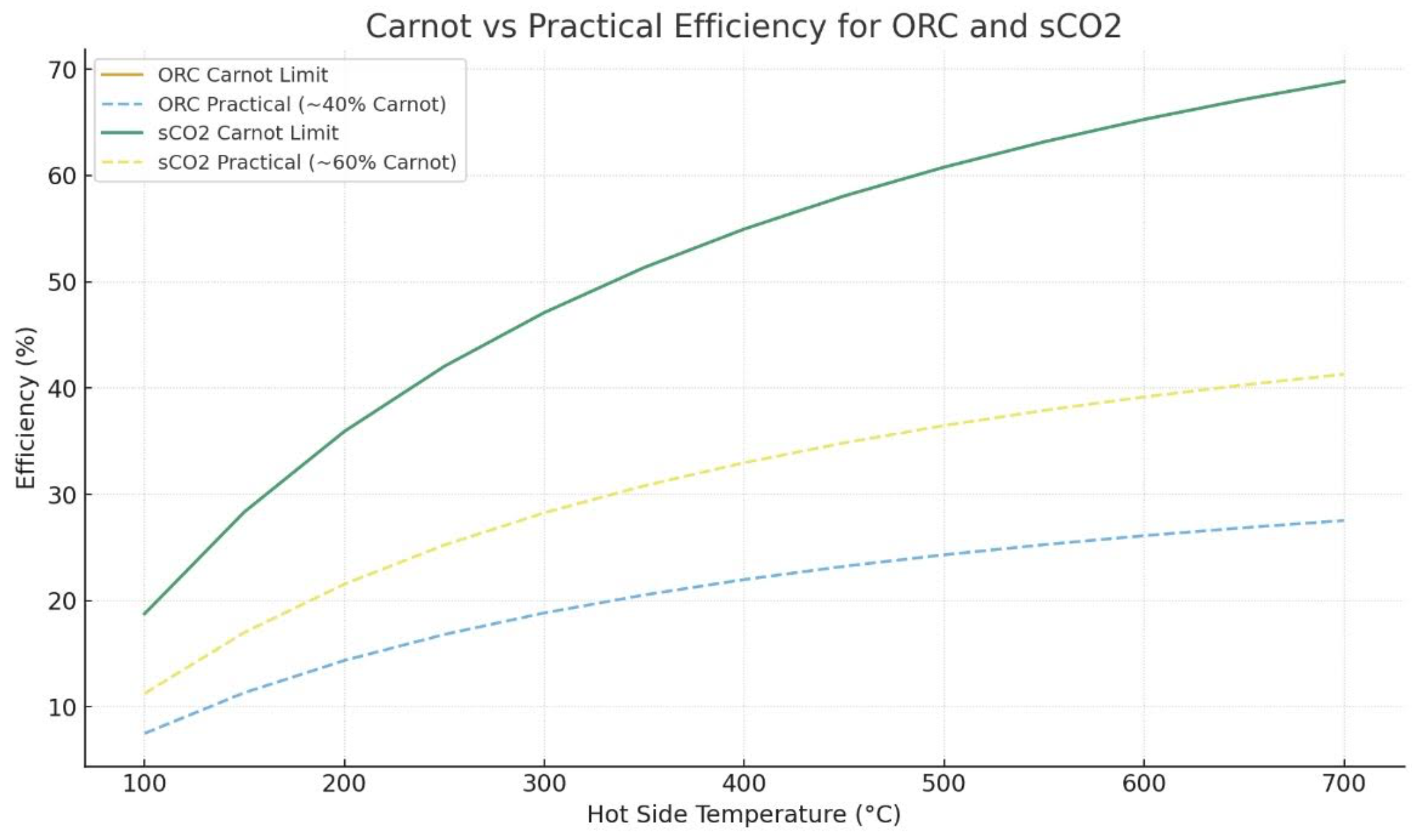
Comparing Carnot Efficiency in Organic Rankine Cycle and Supercritical CO2 Turbomachinery
IntroductionAll heat engines are bound by the same thermodynamic law: the Carnot efficiency. Whether the working fluid is an organic compound in an Organic Rankine Cycle (ORC) or supercritical carbon dioxide (sCO2) in a Brayton cycle, the maximum efficiency achievable depends only on the hot side and cold side temperatures. This article examines how Carnot efficiency applies to both systems and what real world performance looks like.The Carnot Efficiency FormulaCarnot efficiency is expressed as:$$eta = 1 • frac{T_c}{T_h}$$Where:$T_h$ = hot side temperature in Kelvin$T_c$ = cold side temperature in KelvinThis formula represents the upper theoretical limit for any cycle, regardless of working fluid.Organic Rankine Cycle (ORC)ORC systems are often used for low to medium temperature heat sources such as geothermal, biomass, and industrial waste heat.Typical hot side: 100 to 350 °CTypical cold side: 20 to 40 °CExample: With $T_h = 200 °C (473 K)$ and $T_c = 30 °C (303 K)$, Carnot efficiency is 36 percent.Practical efficiency: ORC systems typically achieve 8 to 20 percent. This corresponds to about 30 to 50 percent of Carnot, limited by pump losses, turbine design, and heat exchanger effectiveness.Supercritical CO2 TurbomachinerysCO2 cycles are well suited for higher temperature heat sources, including concentrated solar power, nuclear reactors, and high grade industrial waste heat.Typical hot side: 400 to 700 °C or higherTypical cold side: 20 to 40 °CExample: With $T_h = 600 °C (873 K)$ and $T_c = 35 °C (308 K)$, Carnot efficiency is 65 percent.Practical efficiency: Modern sCO2 turbomachinery can reach 35 to 50 percent. These systems often achieve 55 to 70 percent of the Carnot limit due to high fluid density, compact turbines, and excellent recuperation.Comparison and Key DifferencesORC excels at capturing low grade heat where sCO2 is inefficient, but suffers from low Carnot limits and reduced practical efficiencies.sCO2 achieves much higher efficiencies at elevated temperatures and can approach a much larger fraction of Carnot compared to ORC.Both systems are ultimately constrained by Carnot efficiency, but the choice of working fluid determines how closely real world designs can approach that theoretical limit.ConclusionCarnot efficiency provides a common framework for comparing heat engine technologies. In low temperature applications, ORC offers a viable solution despite modest efficiencies. At higher temperatures, supercritical CO2 turbomachinery demonstrates significant advantages, achieving both higher theoretical and practical performance. Selecting the right working fluid is therefore a matter of matching source temperature with the technology that can best exploit it.

